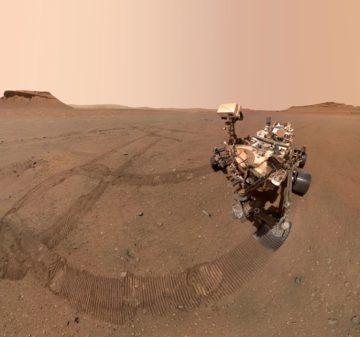Alexandra Witze in Nature:
 For decades, scientists who study Mars have watched in envy as spacecraft brought pieces of the Moon, chunks of asteroids and even samples of the solar wind to Earth to be studied. Now some of those researchers might finally be on track to receive rocks from the red planet — but only if NASA and the European Space Agency (ESA) can pull off a complex and daring mission.
For decades, scientists who study Mars have watched in envy as spacecraft brought pieces of the Moon, chunks of asteroids and even samples of the solar wind to Earth to be studied. Now some of those researchers might finally be on track to receive rocks from the red planet — but only if NASA and the European Space Agency (ESA) can pull off a complex and daring mission.
For several years, the two agencies have been planning to send spacecraft to Mars, starting no earlier than 2027, to pick up rock samples that are being collected by NASA’s Perseverance rover. But technological and financial hurdles could derail the multi-billion-dollar scheme. Last month, NASA said it wants to allocate nearly US$1 billion to Mars sample return in the upcoming fiscal year — a huge sum that could force the agency to dip into other parts of its science budget. This would affect other projects, potentially delaying a planned heliophysics mission, for example. And much is at stake for the Mars sample return: Perseverance has gathered a scientifically stunning set of rocks. In December and January, the rover deposited ten cigar-sized tubes filled with rock, soil and air from the Martian atmosphere on a flat area of the planet’s surface for a future mission to pick up (see ‘Sample depot’).
More here.
